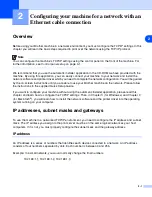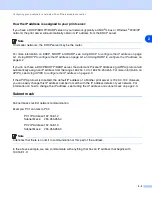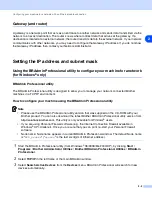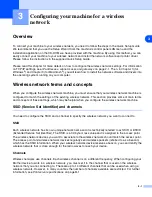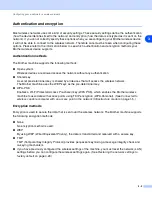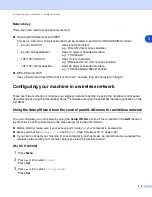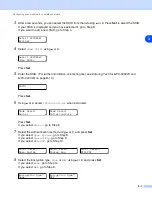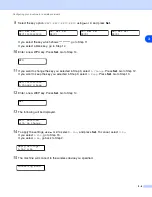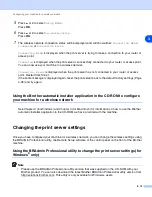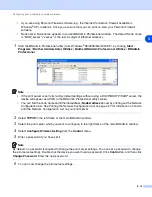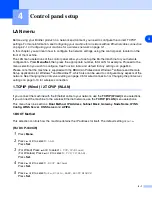
Configuring your machine for a wireless network
3 - 2
3
Authentication and encryption
Most wireless networks use some kind of security settings. These security settings define the authentication
(how the device identifies itself to the network) and encryption (how the data is encrypted as it is sent on the
network). If you do not correctly specify these options when you are configuring your Brother wireless device,
it will not be able to connect to the wireless network. Therefore care must be taken when configuring these
options. Please refer to the information below to see which authentication and encryption methods your
Brother wireless device supports.
Authentication methods
The Brother machine supports the following methods:
■
Open system
Wireless devices are allowed access the network without any authentication.
■
Shared key
A secret pre-determined key is shared by all devices that will access the wireless network.
The Brother machine uses the WEP keys as the pre-determined key.
■
WPA-PSK
Enables a Wi-Fi Protected Access Pre-shared key (WPA PSK), which enables the Brother wireless
machine to associate with access points using TKIP encryption (WPA-Personal). (See
wireless capable computer with an access point in the network (Infrastructure mode)
Encryption methods
Encryption is used to secure the data that is sent over the wireless network. The Brother machine supports
the following encryption methods:
■
None
No encryption method is used.
■
WEP
By using WEP (Wired Equivalent Privacy), the data is transmitted and received with a secure key.
■
TKIP
TKIP (Temporal Key Integrity Protocol) provides per-packet key mixing a message integrity check and
re-keying mechanism.
■
If you have previously configured the wireless settings of the machine, you must reset the network (LAN)
settings before you can configure the wireless settings again. (See








